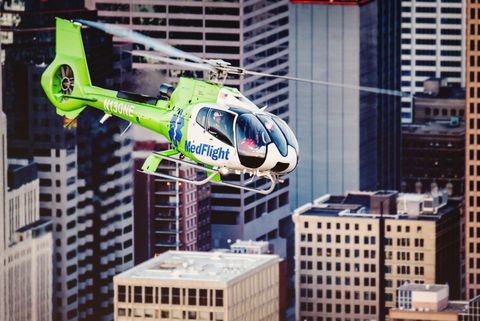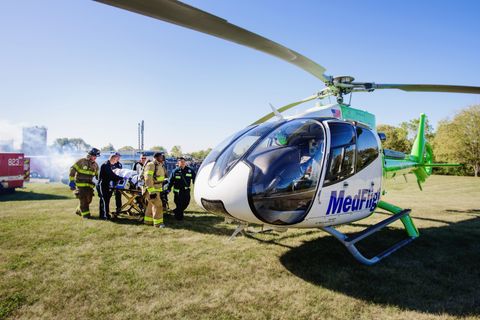Unleashing mental health support: therapy dogs in the air medical industry
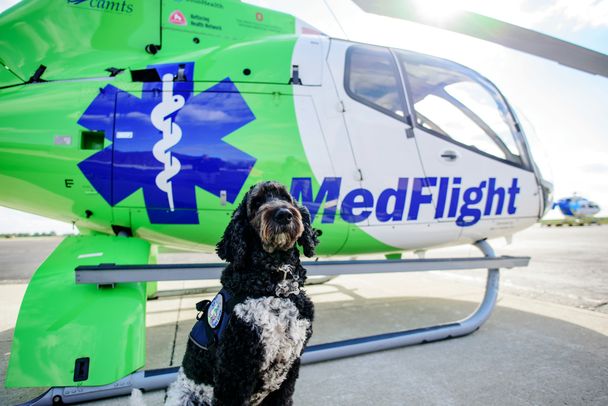
Caregivers are sometimes the ones who require care, a reality Debi Hastilow knows all too well. A retired helicopter flight nurse from MedFlight of Ohio in Columbus, Ohio, Debi operated in high-stress environments for 35 years, providing life-saving medical care to patients in transit.
“The first day on the job you are given this invisible backpack,” says Debi. “Every time you have a traumatic rescue, you take all that burden and put it in your backpack. You carry it with you, add more burden to it, and never put it down.”
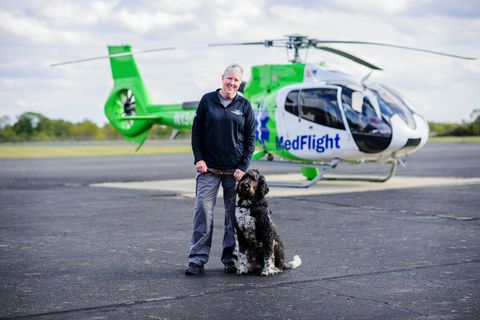
According to the U.S. Centers for Disease Control and Prevention (CDC), the occupational stress first responders experience can lead to anxiety and depression. Debi recalls a moment early in her career at the age of 19, where the team was unable to rescue the victim, an experience that still weighs her down many decades later.
At the time of the event, mental health resources for first responders were harder to come by. But the mentality began to shift following the events of September 11, 2001, when a doctor named Jeffrey Mitchell saw the need to support police and firefighters as they navigated the trauma they experienced.
Dr. Mitchell, co-founder of the International Critical Incident Stress Foundation and a pioneer in emergency mental health, developed a crisis intervention system named Critical Incident Stress Management (CISM). CISM was introduced to the emergency medical services (EMS) in the early 80’s and is now employed by a range of professionals, such as first responders and military personnel, who regularly confront traumatic situations.
MedFlight of Ohio launches P.A.W.S. therapy dog program
Fast-forward several decades to when Debi witnessed her own colleagues dealing with a near identical experience. “Knowing how that first loss has stayed with me over the years, I want to make sure other first responders know they are not alone. It’s OK to not be OK. I want to show them how to work through the effects of our chosen profession,” she says.
In 2017 Debi, with support from MedFlight of Ohio’s CEO Tom Allenstein and VP of Business Development Todd Bailey, created one of the first trauma response program for air medical providers in the nation, modeling some aspects of the program after Dr. Mitchell’s CISM. The MedFlight P.A.W.S. program, named to reflect the use of therapy dogs, stands for Peer Animal-assisted Wellness Support Program.
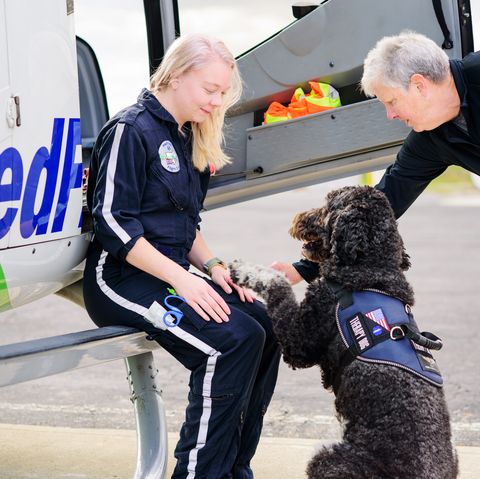
Introducing therapy dogs into the lives of first responders can offer invaluable support and comfort. As Debi explains “Therapy dogs used in the first responder sector are communication ice breakers. They are nonjudgmental, full of unconditional love and understanding and great listeners. I’ve seen grown men, kneel down and pet Ollie and start talking about their dog and then the conversation turns trusting and safe. Sometimes just the simple act of petting a therapy dog can elicit a smile or a tear without words spoken, a brief stillness in the mental and emotional chaos that follows a traumatic event.”
With Ollie by her side, Debi and other dedicated teams have offered crucial support within 12 to 24 hours of a traumatic event, aiming to alleviate the invisible emotional backpack carried by first responders in the flight segment.
How do therapy dogs aid first responders in coping with trauma?
Ollie’s therapeutic skills shine during peer support meetings organized through P.A.W.S.
Situated in a circle – as eye contact is highly valued in peer support – each person begins by sharing their own version of the same event. Looking across the circle, they see in each other a shared understanding of the weight being carried. In the coming days, weeks, and months, they lean on each other because that recognition of a shared experience has been established.
As people in the circle share, Ollie senses those that need him most. He may go and sit by one person who strokes his head as they speak. Another he will rest his paw in their lap, or in his signature move, give a hug. Oftentimes someone will sink to the floor, hang on to Ollie, and cry. A safe place has been given to start processing their burdens.
MedFlight’s CEO, Tom Allenstein was brought into the program from the initial concept. “Debi had a whole sales pitch developed and by the time she got to the third slide, I was all in. I understand the importance of catching someone when they are most vulnerable right after the event. Who they can connect with at that time is also crucial and who best to talk to but a group of your peers who may have been in very similar circumstances or at least understand the situation better.”
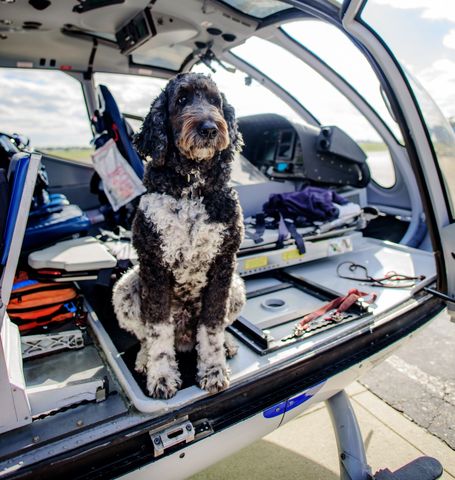
Today, P.A.W.S. extends its services beyond flight crews to encompass fire and ambulance responders, law enforcement officers, dispatchers, and others affected by such incidents. Today, even in retirement, Debi continues to support her peers, volunteering alongside a team of 20-30 other volunteers and their 3 therapy dogs, Ollie, Izzy, and Charlie. With P.A.W.S., there is a hope the backpacks they carry are a little lighter.
